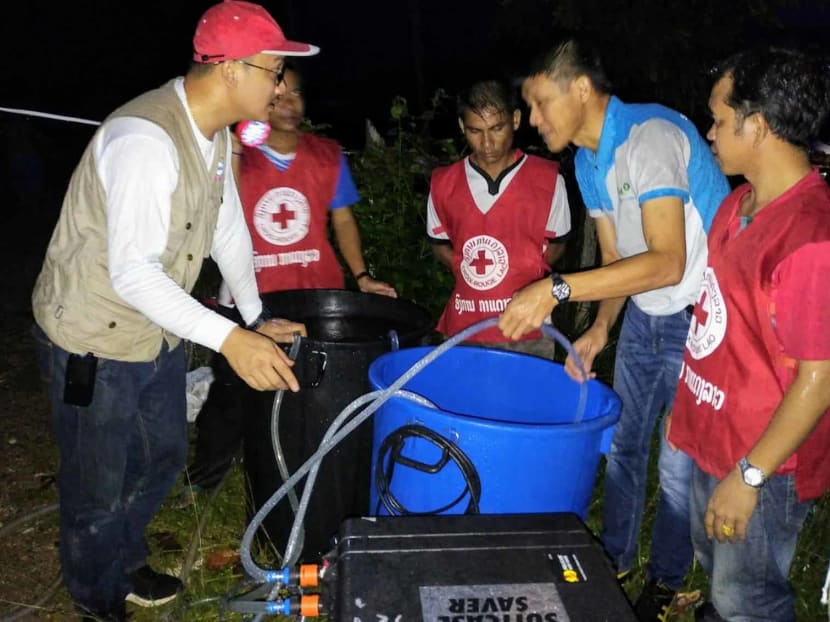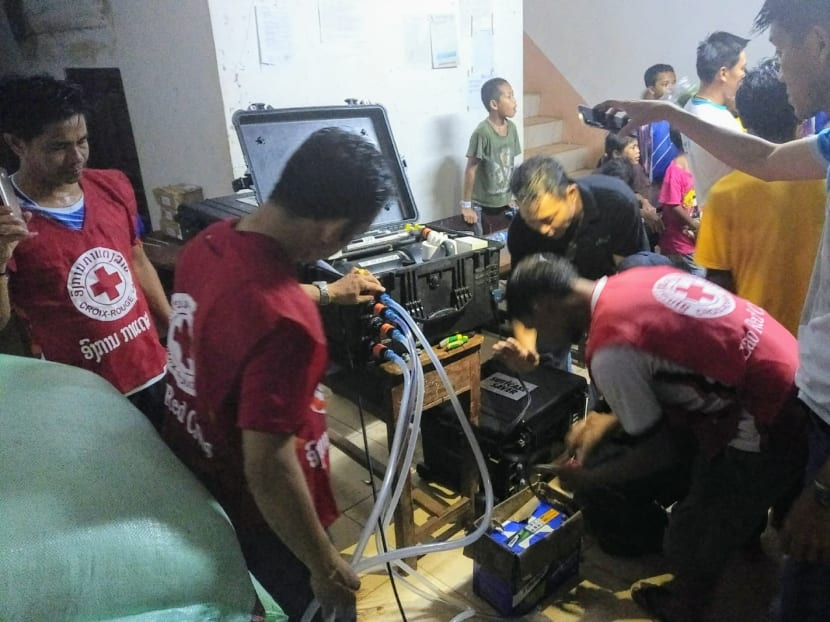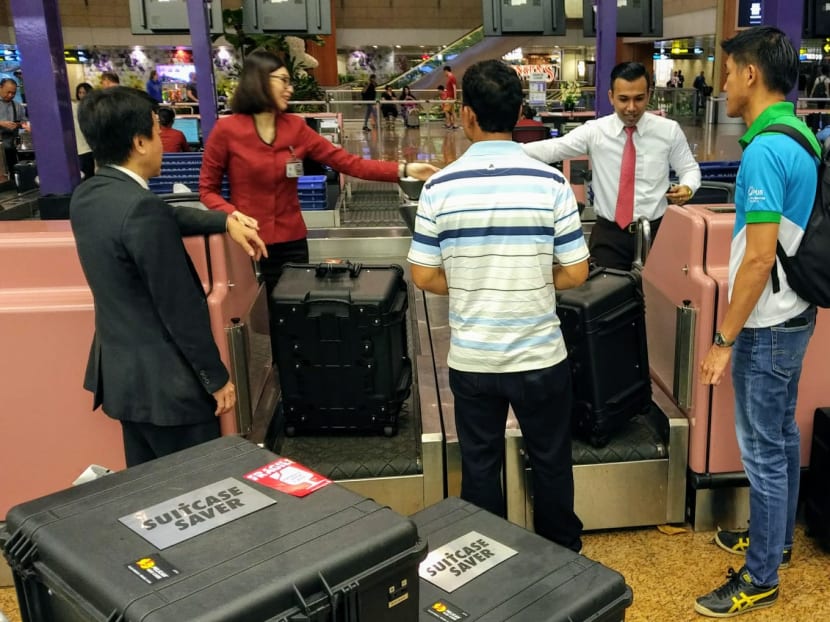Laos dam collapse: Singapore firms donate portable water systems to shelters
SINGAPORE — It was not his first assignment to provide relief aid, but Singaporean Chris Lim was shaken when he arrived in southern Laos and saw the flood-hit areas damaged by a dam collapse.

Two Singaporean firms, HSL Constructor and Aquayana, worked together to donate portable ultra-filtration and water treatment systems for flood-hit communities at Sanamxay district in southern Laos to get safe drinking water.
SINGAPORE — It was not his first assignment to provide relief aid, but Singaporean Chris Lim was shaken when he arrived in southern Laos and saw the flood-hit areas damaged by a dam collapse.
The 43-year-old was involved in the rebuilding efforts after the earthquake in Nepal in 2015 and offered support at a relief-aid headquarters after floods hit Kelantan, Malaysia last year, but had never come face to face with a disaster as it unravelled.
"It was raining very heavily when we reached (the evacuation centre). The victims were still going through the trauma and the (flood) waters had not subsided," he recalled.
On the way to the centre, he and his team passed by a local relief vehicle that had skidded into a ravine, killing the driver. It was the "worst feeling", Mr Lim said, and "morale was very low".
Close to 30 people have been killed and more than 130 people are missing after the collapse of the uncompleted Xe-Namnoy hydroelectric dam on July 23, which sent millions of tonnes of mud and water gushing into surrounding villages, burying homes and buildings, and blocking roads.
More than 6,000 people were left homeless and some 3,000 people have sought shelter in a refugee camp at the hardest-hit Sanamxay district of Attapu province.
On July 28, Mr Lim, a senior director of operators, was among three representatives from Singapore companies HSL Constructor and Aquayana who flew to Laos and headed to Sanamxay School, a makeshift evacuation centre in Sanamxay district, to deliver aid. They were on the ground to deploy portable water treatment systems that were conceptualised and developed by water solutions firm Aquayana, with technical assistance by construction firm HSL, Mr Lim's employer.
The relief efforts were made possible through close co-ordination with the Laos' foreign ministry and the Asean Coordinating Centre for Humanitarian Assistance on Disaster Management (AHA Centre).

With the help of Lao Red Cross, the team travelled by four-wheel drive to the evacuation centres. Due to the flood and torrential rains — the roads were either partially flooded or thick with mud — the team took four hours to cover 200km.
Schools were used as evacuation centres, and Mr Lim observed that there were "probably more than 100 (survivors) in each classroom" and it was "very crammed".
Singaporean Hassan Ahmad, 48, chief executive officer of Aquayana who was also there, said that with everyone cooped up at the centre, an epidemic could easily break out.
However, he was struck by the courage of the villagers. "If you look at the geography, the Laotians have experienced major floods before… that has moulded them to be quite resilient; they're not the complaining sort."
Some even smiled at the team. "It's a good human spirit to see in a crisis situation," Mr Hassan said. "In the cold rain and all that, the warmth is not lost."
Mr Hassan's company, Aquayana, developed a water system Suitcase Saver 400 (SS400) and partnered HSL Constructor, the company which recently finished building Singapore's third desalination plant. HSL helped to engineer and manufacture the systems.
These were sent to the evacuation centre in Sanamxay, where relief groups there distributed the systems to four more shelters across the affected region.
The SS400 churns out more than 400L of potable water hourly by filtering and treating sub-micro-sized particles such as bacteria and viruses. The five systems will help serve 6,000 displaced Laotians across the five evacuation shelters.
Each SS400 weighs 38kg, and Singaporean airline SilkAir waived the extra baggage charge of the relief team's cargo, Mr Hassan said.

He also said that the deployment of the SS400 to Laos is a "full donation", and is the first time the system has been used for disaster relief.
Installing the water systems at the shelters was a success. The team conducted training for ground officials and technical staff members from the Lao Red Cross and the National Disaster Management Organisation at one of the evacuation centres.
Feedback from the relief organisations was that the SS400 was simple to operate, quickly turning dirty well water into water fit for consumption, Mr Hassan added.
"We wanted to keep it simple, because (during a crisis), it's not the time for people to be learning too much," he said.
Mr Hassan has been going on humanitarian-aid missions since 2001 when he joined the non-profit organisation Singapore International Foundation. He made trips to other large-scale disaster areas such as the places affected by the war in Afghanistan, and the earthquake and tsunami in Tohoku, Japan in 2011.
He hopes that Singapore's private sector can contribute more to humanitarian-aid efforts with not just money, but their skills and expertise. "I think this is where there is a gap in the humanitarian-aid ecosystem," he said.
The team returned to Singapore on Monday (July 30) evening.
Mr Lim, who is comparatively new to such missions, said that he does not tell his two daughters, aged 10 and 12, about his assignments until after he returns so that they do not have to worry about him.
"They were quite shocked (when I told them) that I was doing this (in Laos), but I tell them that it's something we should do to help people in crisis."






